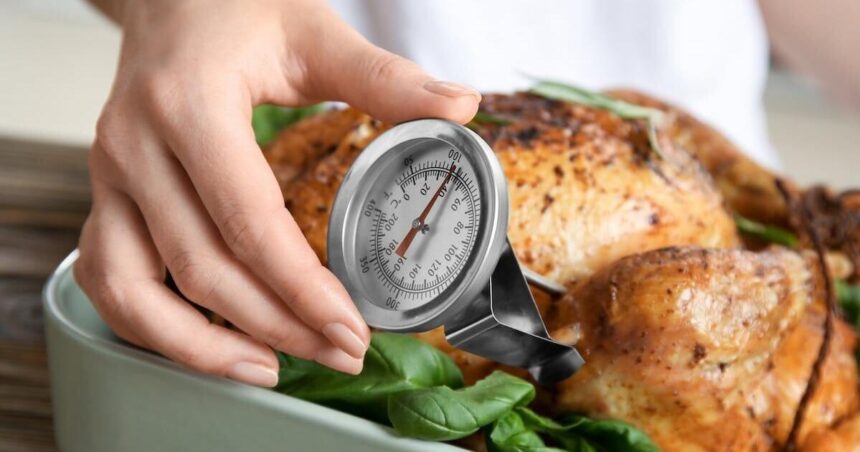Key Takeaways
-
Only 1 in 4 Americans regularly use a food thermometer to prevent foodborne illness
-
Many aren’t aware of the cooking temperatures required for food to be safe
-
Most aren’t drinking raw milk, which has a higher risk of foodborne illness
MONDAY, Aug 5, 2024 (HealthDay News) — Individuals concerned about bird flu, salmonella, and other foodborne illnesses can take simple steps to protect themselves – using a cooking thermometer to ensure food is properly cooked.
However, a recent health survey revealed that only about 1 in 4 Americans (27%) use a thermometer either “often” or “all the time” to verify if meat, poultry, or fish has reached a safe temperature for consumption.
A slightly higher percentage of U.S. adults (29%) indicated they “never” use a thermometer while cooking. About 20% reported doing so “rarely” and another 20% stated they do so “sometimes.”
“Utilizing a food thermometer to confirm that meat, poultry, fish, and eggs are cooked to a safe internal temperature, which eliminates bacteria such as E. coli and salmonella, is crucial in preventing food poisoning,” said Kathleen Hall Jamieson, director of the Annenberg Public Policy Center at the University of Pennsylvania.
“Every cook should have a food thermometer easily accessible in the kitchen or close to the grill,” Jamieson emphasized.
Experts added that a food thermometer ensures that food is heated enough to kill bacteria and viruses.
However, the survey also found that many individuals were unaware of the required temperature for cooking poultry and eggs to eliminate bird flu and other pathogens.
Less than 4 in 10 respondents (38%) knew the correct temperature of 165 degrees. Over half (51%) were unsure, and 4% believed no temperature could eliminate germs in poultry and eggs.
Furthermore, only a small percentage correctly identified 160 degrees as the proper temperature for cooking ground beef (29%) to eliminate E. coli bacteria, and 145 degrees for steaks and other whole cuts of beef (21%).
On a positive note, the survey indicated that a majority of U.S. adults are not consuming raw or unpasteurized milk, which has been linked to bird flu outbreaks among dairy cows and other animals on dairy farms.
Only 3% of U.S. adults reported consuming raw milk in the past 12 months, and another 4% were unsure if they had done so.
Unfortunately, individuals lack awareness of the connection between bird flu and raw milk. The survey revealed that only 15% were aware that raw milk increases the risk of contracting bird flu, while 33% believed it had no effect, and nearly half (49%) were uncertain.
Just over half (54%) recognized that raw milk is less safe to drink than pasteurized milk. A small percentage considered raw milk safer (6%), while others were unsure about the safety comparison.
Unpasteurized dairy products are estimated to cause significantly more illnesses and hospitalizations than pasteurized products, experts noted.
The survey also mentioned a salmonella outbreak related to unpasteurized milk from Raw Farm in Fresno, Calif., which affected 171 people and led to 22 hospitalizations between September 2023 and March 2024.
As of late July, the U.S. experienced 13 human cases of bird flu, with a few linked to exposure to cows and poultry. Bird flu outbreaks impacted numerous cattle herds and poultry in several states, as per the U.S. Department of Agriculture.
The survey, conducted from July 11-18, involved a representative sample of nearly 1,500 U.S. adults, with a margin of error of plus or minus 3.6 percentage points.
More information
For additional details, visit the U.S. Centers for Disease Control and Prevention.
SOURCE: University of Pennsylvania, news release, July 29, 2024
What This Means For You
Cook food to a proper temperature to avoid foodborne illness, and avoid drinking or eating raw milk products.





